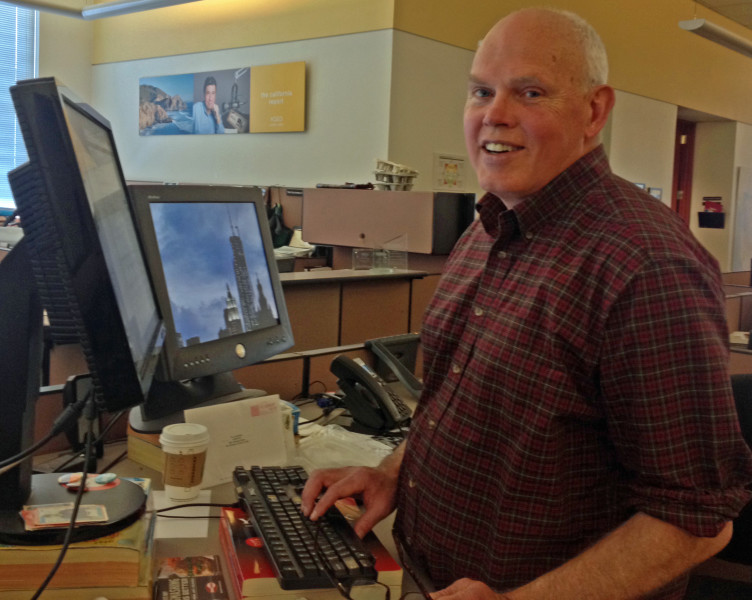If you visit KQED.org on a regular basis, chances are good that you read News Fix — one of our website's top three most-viewed pages. And while the news stories come from a variety of sources, the byline visitors see most often is that of Dan Brekke.
My conversation with Dan may go down as the most ambulatory and noisy interview in On Q history. Not only did we move twice inside the KQED building, when fire alarms began to wail, we and all of our colleagues had to evacuate. We finished the interview on a street corner while waiting for the SFFD to arrive and give us the all clear.
Dan took over as the News Fix blogger and editor in the fall of 2013, after six years as an editor for KQED Radio news. But his career in journalism goes back a bit further than that. He's worked in media "ever since Nixon's first term, when newspapers were still using hot type . . . . I went into a newsroom for the first time when I was 18," he recalls. "I'd graduated early from high school and I had a chance to work as a copy boy at a newspaper in Chicago. It was so long ago that little was thought of the practice of the older employees calling us 'boy.' They'd say, 'Boy. Copy.' Just like in the movies."
While a student at U.C. Berkeley, Dan worked at the Daily Cal and later "at a little paper in the East Bay." He wound up at the Examiner for about 12 years through the mid '90s, and then went to work at Wired just as it was starting its own news service.
"My introduction to online journalism happened when I was at the Examiner with [KQED Public Radio News Director] Bruce Koon. There was a strike in November 1994, and one of the things that the union journalists did was publish a strike paper online. (If only the newspapers had seen the significance of this at the time.) I remember I was filing an election-night story about East Bay election results and someone was describing to me over the phone the HTML tags you needed to put before and after every paragraph."
